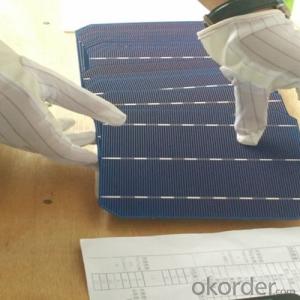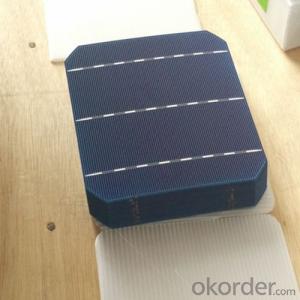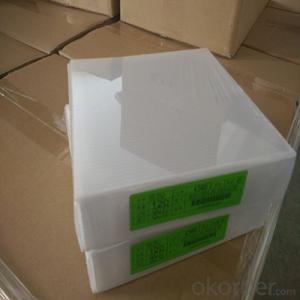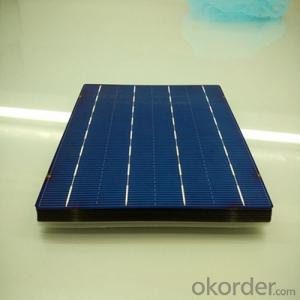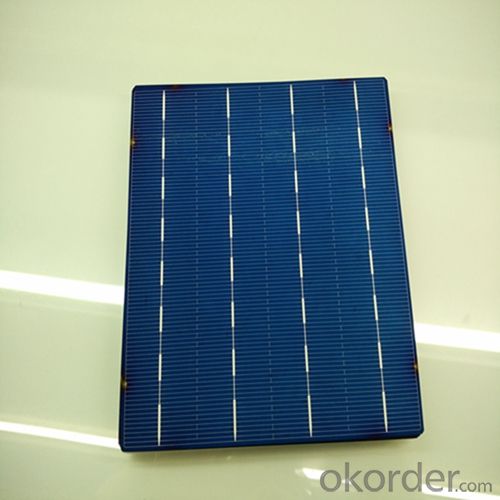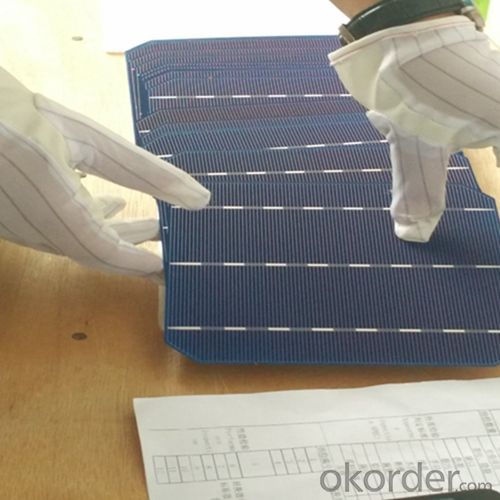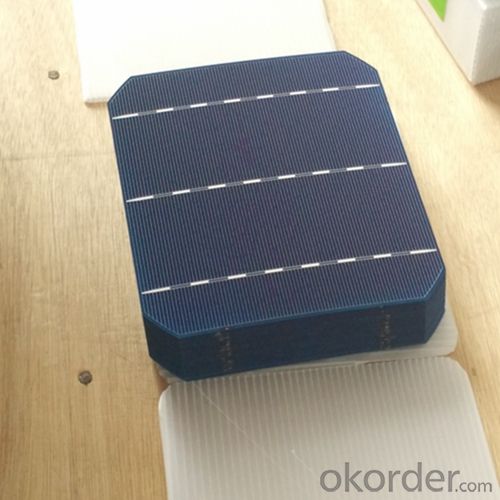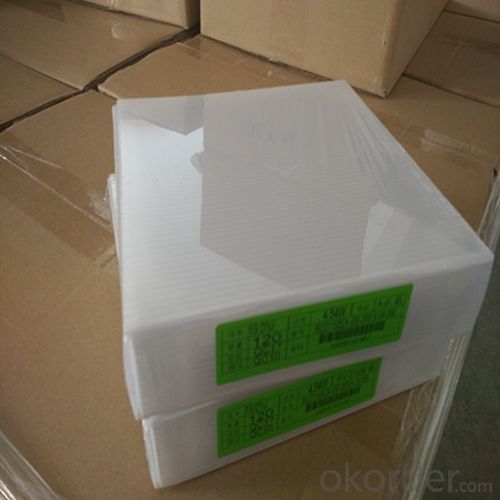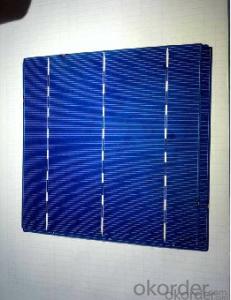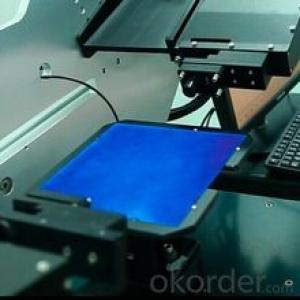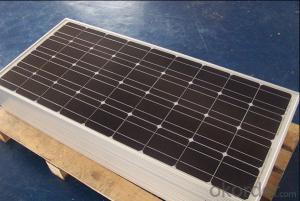Wholesale Solar Cells China - Poly 156x156mm2 Class A Solar Cells Made in China
- Loading Port:
- Shanghai
- Payment Terms:
- TT OR LC
- Min Order Qty:
- 5999 watt
- Supply Capability:
- 6000000 watt/month
OKorder Service Pledge
OKorder Financial Service
You Might Also Like
The operation of a photovoltaic (PV) cell requires 3 basic attributes:
The absorption of light, generating either electron-hole pairs or excitons.
The separation of charge carriers of opposite types.
The separate extraction of those carriers to an external circuit.
In contrast, a solar thermal collector supplies heat by absorbing sunlight, for the purpose of either direct heating or indirect electrical power generation from heat. A "photoelectrolytic cell" (photoelectrochemical cell), on the other hand, refers either to a type of photovoltaic cell (like that developed by Edmond Becquerel and modern dye-sensitized solar cells), or to a device that splits water directly into hydrogen and oxygen using only solar illumination.Characteristic of Mono 156X156MM2 Solar Cells
You are gaining energy independence - add battery backup power for even greater energy security
The cost of electricity is only going to rise – insure against that rising cost
Adaptive cells change their absorption/reflection characteristics depending to respond to environmental conditions. An adaptive material responds to the intensity and angle of incident light. At the part of the cell where the light is most intense, the cell surface changes from reflective to adaptive, allowing the light to penetrate the cell. The other parts of the cell remain reflective increasing the retention of the absorbed light within the cell.[67]
In 2014 a system that combined an adaptive surface with a glass substrate that redirect the absorbed to a light absorber on the edges of the sheet. The system also included an array of fixed lenses/mirrors to concentrate light onto the adaptive surface. As the day continues, the concentrated light moves along the surface of the cell. That surface switches from reflective to adaptive when the light is most concentrated and back to reflective after the light moves along
Mechanical data and design
Format | 156mm x 156mm±0.5mm |
Thickness | 210μm±40μm |
Front(-) | 1.5mm bus bar (silver),blue anti-reflection coating (silicon nitride) |
Back (+) | 2.5mm wide soldering pads (sliver) back surface field (aluminium) |
Temperature Coefficient of Cells
Voc. Temp.coef.%/K | -0.35% |
Isc. Temp.coef .%/K | +0.024%/K |
Pm.Temp.coef. %/K | -0.47%/K |
Electrical Characteristic
Effiency(%) | Pmpp(W) | Umpp(V) | Impp(A) | Uoc(V) | Isc(A) | FF(%) |
18.35 | 4.384 | 0.526 | 8.333 | 0.63 | 8.877 | 78.39% |
18.20 | 4.349 | 0.526 | 8.263 | 0.63 | 8.789 | 78.54% |
18.05 | 4.313 | 0.525 | 8.216 | 0.63 | 8.741 | 78.32% |
17.90 | 4.277 | 0.524 | 8.161 | 0.625 | 8.713 | 78.04% |
17.75 | 4.241 | 0.523 | 8.116 | 0.625 | 8.678 | 77.70% |
17.60 | 4.206 | 0.521 | 8.073 | 0.625 | 8.657 | 77.36% |
17.45 | 4.170 | 0.519 | 8.039 | 0.625 | 8.633 | 76.92% |
17.30 | 4.134 | 0.517 | 8.004 | 0.625 | 8.622 | 76.59% |
17.15 | 4.096 | 0.516 | 7.938 | 0.625 | 8.537 | 76.80% |
17.00 | 4.062 | 0.512 | 7.933 | 0.625 | 8.531 | 76.18% |
16.75 | 4.002 | 0.511 | 7.828 | 0.625 | 8.499 | 75.34% |
16.50 | 3.940 | 0.510 | 7.731 | 0.625 | 8.484 | 74.36% |
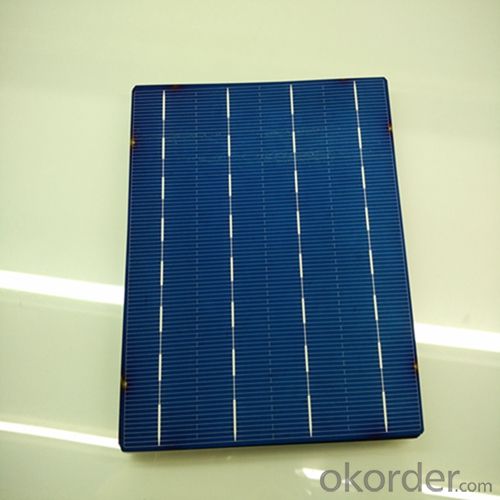
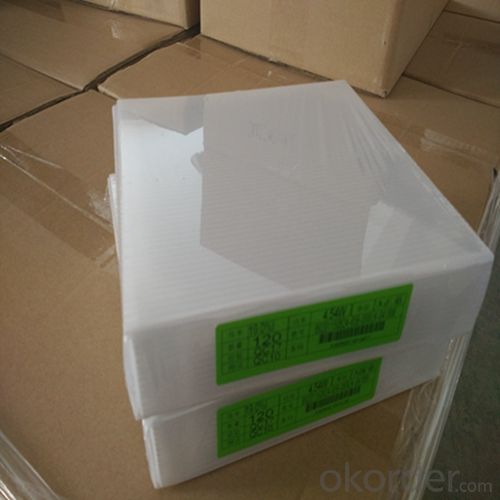
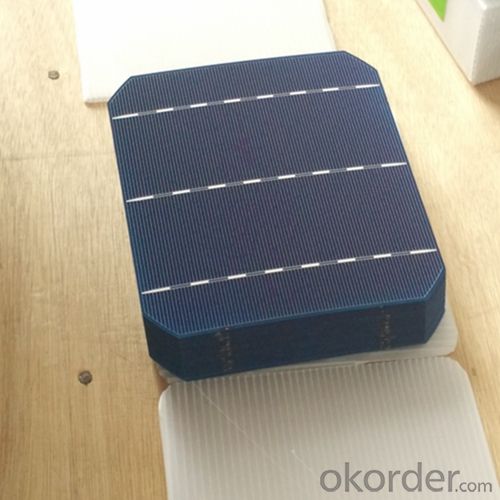
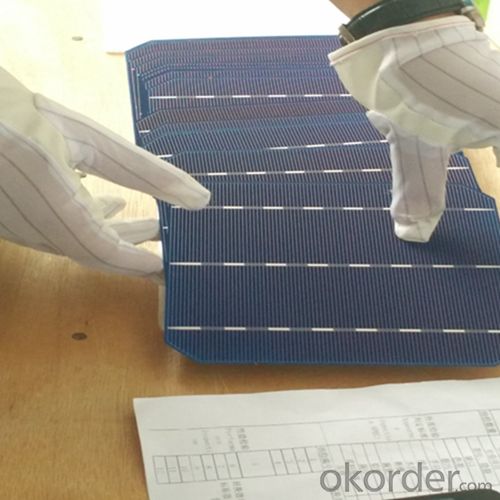
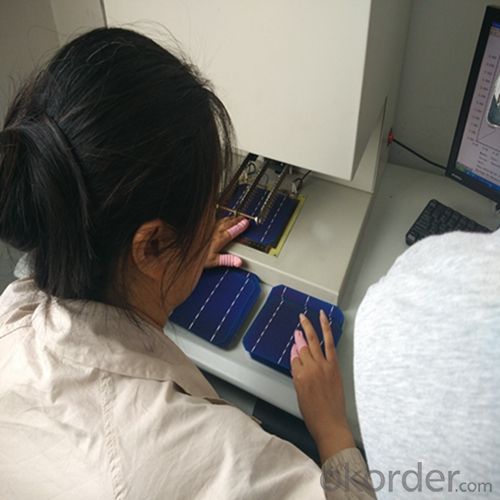 FAQ
FAQ
Q: What price for each watt?
A: It depends on the quantity, delivery date and payment terms, generally Large Quantity and Low Price
Q: What is your size for each module? Can you tell me the Parameter of your module?
A: We have different series of panels in different output, both c-Si and a-Si. Please take the specification sheet for your reference.
Q: What is your size for each module? Can you tell me the Parameter of your module?
A: We have different series of panels in different output, both c-Si and a-Si. Please take the specification sheet for your reference.
- Q: Can solar cells be used in remote monitoring systems?
- Yes, solar cells can be used in remote monitoring systems. Solar cells are an ideal power source for remote monitoring systems as they convert sunlight into electricity, providing a sustainable and reliable source of power even in remote or off-grid locations. This eliminates the need for traditional power sources or frequent battery replacements, making solar cells a cost-effective and environmentally friendly solution for powering remote monitoring systems.
- Q: What is a polycrystalline solar cell?
- A polycrystalline solar cell is a type of solar cell that is made up of multiple crystalline silicon grains. It is formed by melting and solidifying silicon into a block, resulting in a material with a random arrangement of crystal structures. This type of solar cell is less expensive to produce compared to monocrystalline solar cells, although it typically has slightly lower efficiency.
- Q: What is the impact of solar cells on reducing noise pollution from power generation?
- Solar cells have a positive impact on reducing noise pollution from power generation as they operate silently, without the need for noisy machinery or moving parts.
- Q: Can solar cells be used in countries with limited sunlight?
- Yes, solar cells can still be used in countries with limited sunlight. While it is true that solar cells generate more electricity in areas with abundant sunlight, they can still function and produce energy in regions with less sunlight. Advances in solar panel technology, such as the use of more efficient materials and improved designs, have made it possible to harness solar power even in countries with limited sunlight. Additionally, the use of energy storage systems, like batteries, can help store excess energy generated during peak sunlight hours for use during low-light periods. Therefore, solar cells can still be a viable and sustainable energy solution in countries with limited sunlight.
- Q: Can solar cells be used on boats?
- Yes, solar cells can be used on boats. They are a reliable and efficient source of renewable energy that can power various electrical systems on board, including lighting, navigation equipment, and charging batteries. Additionally, solar cells are lightweight, durable, and environmentally friendly, making them an ideal choice for boating applications.
- Q: What is the impact of dust and dirt on solar cell performance?
- The presence of dust and dirt on solar cells can significantly impact their performance. These particles can accumulate on the surface of the cells, reducing the amount of sunlight that reaches the photovoltaic material. This reduces the efficiency of the solar cells in converting sunlight into electricity. Dust and dirt can also create shadows on the cells, causing hot spots and leading to uneven distribution of power production. Therefore, regular cleaning and maintenance of solar panels are crucial to maximize their performance and ensure optimal energy generation.
- Q: Why and what is the low efficiency solar cell?
- The technical problems will cause the low efficienct of the solar cells, including solar and thermal energy, solar cells are now either absorb light energy, or absorb heat, there is little light and heat absorbed together.
- Q: Can solar cells be used in floating solar farms?
- Yes, solar cells can be used in floating solar farms. Floating solar farms, also known as floating solar panels or floating photovoltaic systems, involve placing solar panels on bodies of water such as lakes, reservoirs, or even the ocean. These solar panels are designed to float on the water's surface and capture sunlight to generate electricity. Floating solar farms are increasingly being adopted as they have numerous advantages, including efficient land use, reduced evaporation, and increased energy production due to the cooling effect of the water.
- Q: Can solar cells be used to power water pumps or irrigation systems?
- Yes, solar cells can be used to power water pumps or irrigation systems. Solar panels can convert sunlight into electricity, which can then be used to power water pumps or irrigation systems. This is a sustainable and environmentally friendly solution as it relies on renewable energy sources.
- Q: What is the role of solar cells in powering water pumping systems?
- Solar cells play a crucial role in powering water pumping systems as they convert sunlight directly into electricity. This renewable energy source eliminates the need for traditional power sources and reduces the reliance on fossil fuels, making water pumping systems more environmentally friendly and sustainable. Additionally, solar cells provide a reliable and cost-effective solution, particularly in remote areas where access to electricity may be limited, ensuring that water can be pumped efficiently for various applications such as irrigation, agriculture, and domestic use.
Send your message to us
Wholesale Solar Cells China - Poly 156x156mm2 Class A Solar Cells Made in China
- Loading Port:
- Shanghai
- Payment Terms:
- TT OR LC
- Min Order Qty:
- 5999 watt
- Supply Capability:
- 6000000 watt/month
OKorder Service Pledge
OKorder Financial Service
Similar products
Hot products
Hot Searches
Related keywords

